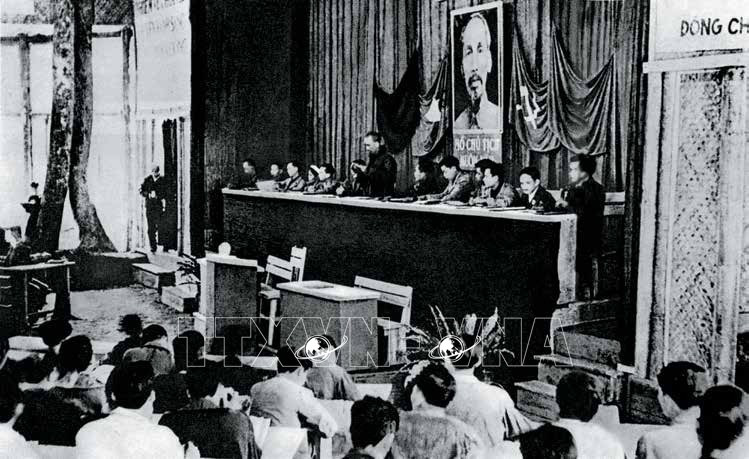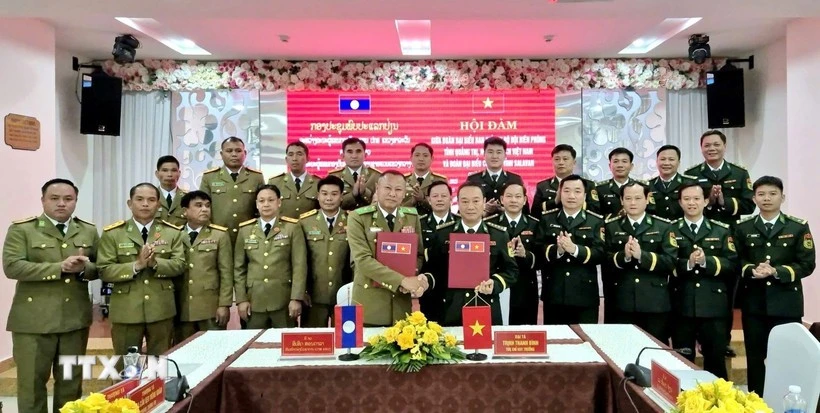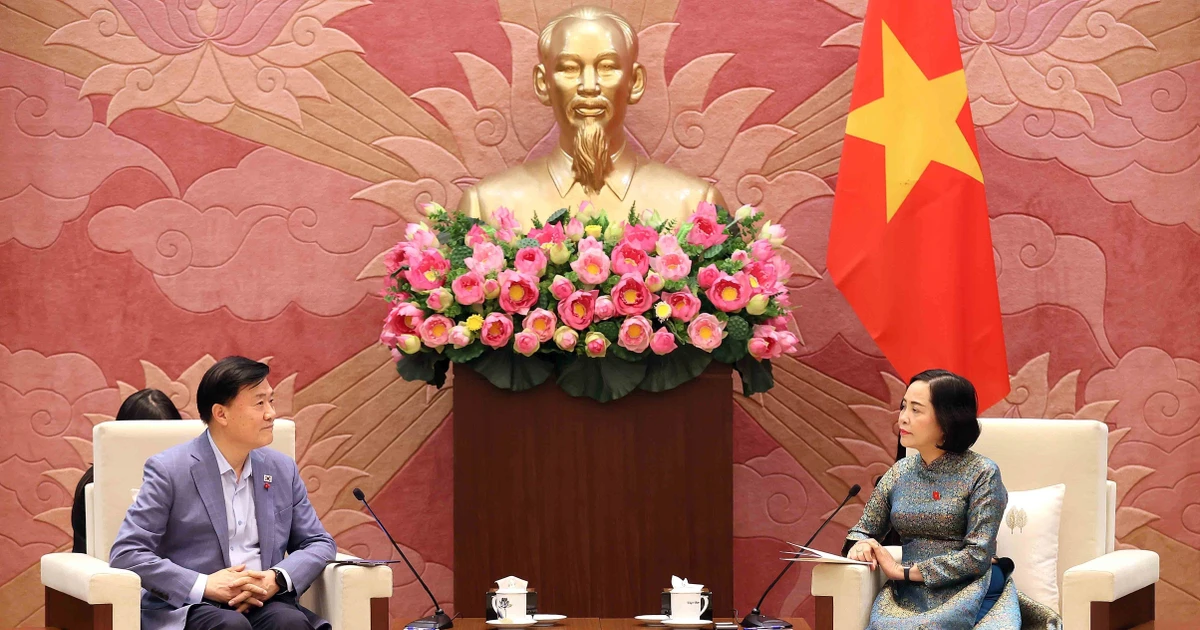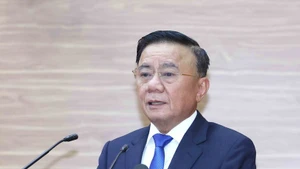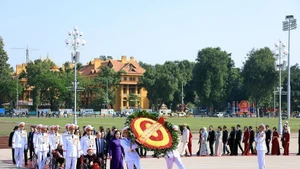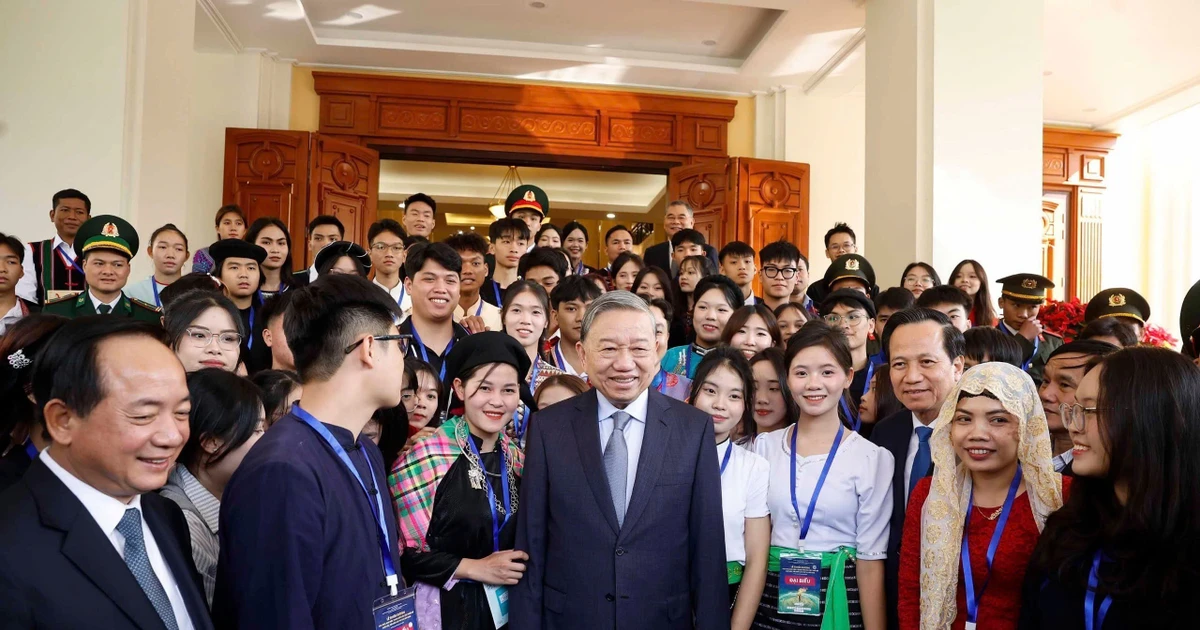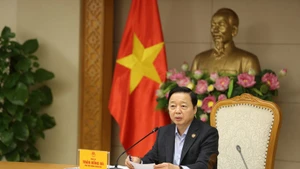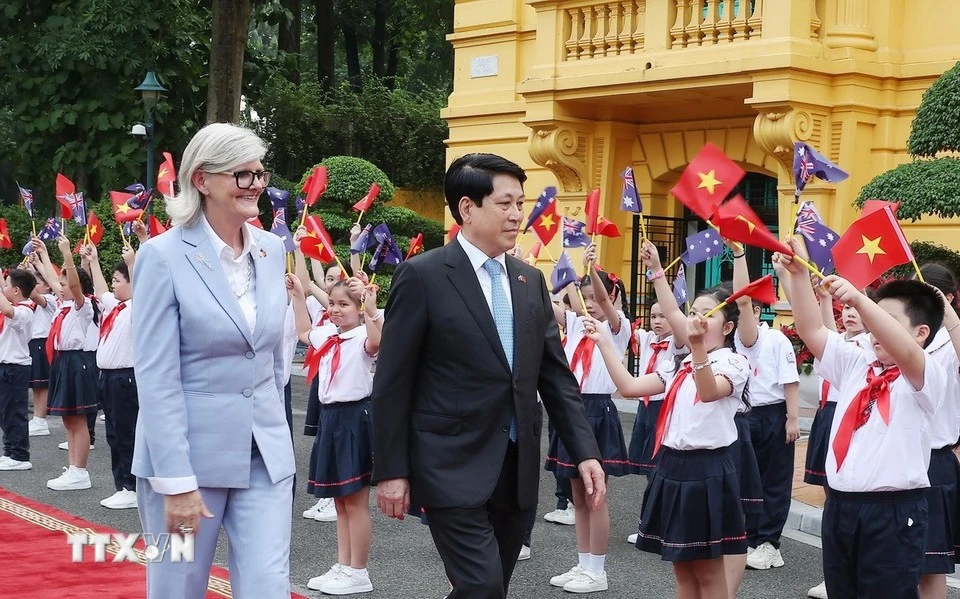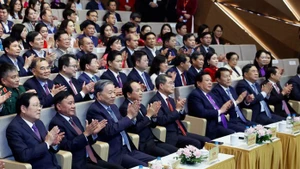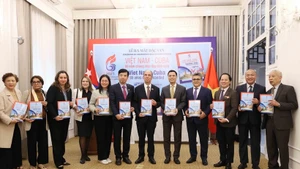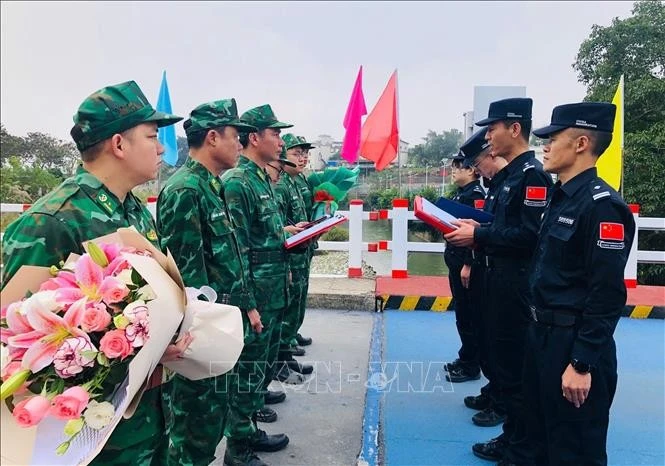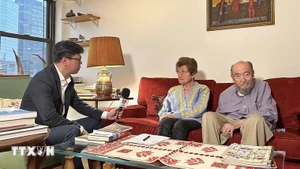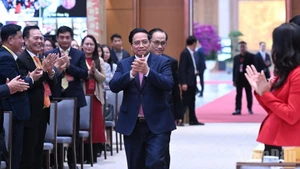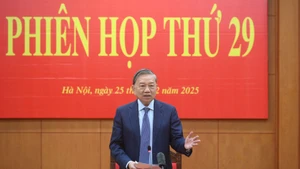The report also outlined the main tasks for the new stage: (1) bring the resistance to complete victory; and (2) organise the Viet Nam Workers’ Party.
After discussing the Political Report, the Congress passed a Resolution affirming: The policy of uniting the people and waging a long-term resistance war for independence and democracy was completely correct. The Party needed to further enhance its leadership of the resistance, concentrate more forces to achieve complete victory, and build the Viet Nam Workers’ Party with a platform and charter suited to Viet Nam’s circemstances. It would also establish revolutionary organisations appropriate to the conditions of Cambodia and Laos.
The report on the Vietnamese revolution outlined the full course of the people's national democratic revolution leading towrad socialism in Viet Nam.
The report on the Vietnamese revolution analysed the nature of Vietnamese society after the August Revolution and during the resistance war against France. The targets of the Vietnamese revolution were imperialism and feudal forces. The basic task of the Vietnamese revolution was to drive out the invading imperialists, overthrow the reactionary feudal forces and, in general, the traitorous Vietnamese puppets, to make Viet Nam completely independent and unified; to make land available to the tillers; to develop the people’s democratic regime, and sow the seeds of socialism in Viet Nam.
The Congress resolved to bring the Party into public operation under the new name of the Viet Nam Workers’ Party, and to adopt the Party’s Platform, Manifesto, and new Charter. The Viet Nam Workers’ Party is the party of the working class and the working people of Viet Nam. The Party takes Marxism-Leninism as its ideological foundation and builds the Party according to the principle of a new-style proletarian party, taking democratic centralism as the basic organisational and operational principle of the Party, with criticism and self-criticism as the law of the Party’s development, and serving the people is the goal of the Party's activities.
The Congress elected a Party Central Committee consisting of 19 official members and 10 alternate members.
The Party Central Committee elected a Politburo consisting of seven official members and one alternate member; elected comrade Ho Chi Minh as Chairman of the Party Central Committee; comrade Truong Chinh as General Secretary.
The 2nd Congress marked an important milestone in the maturity of the Party; it marked the Pary’s transition from clandestine to public operation under the name of the Viet Nam Workers’ Party, meeting the requirement of setting out the correct revolutionary line to lead the entire people to victory in the resistance war.
(Compiled from: Complete Collection of Party Documents; Chronological History of the Communist Party of Viet Nam; tulieuvankien.dangcongsan.vn).
GENERAL CONTEXT
August 1945: The August Revolution succeeded and the Democratic Republic of Viet Nam was born.
1946–1950: The nationwide resistance war against French colonialism broke out and expanded.
1950: The victory of the 1950 Autumn-Winter Border War, the resistance war moved to the counter-offensive and offensive phase.
February 11-19, 1951: The 2nd Congress in Vinh Quang Commune, Chiem Hoa, Tuyen Quang with 158 official delegates.
1951: The Party changed its name to the Viet Nam Workers’ Party, operating openly.
DOMESTIC SITUATION
August Revolution 1945: Under the leadership of the Party and President Ho Chi Minh, our people won independence, established the Democratic Republic of Viet Nam, overthrew the monarchy of several decades, and broke the colonial shackles of nearly 100 years.
National resistance: Beginning in 1946, the resistance war against the French colonialists broke out nationwide. Vietnamese people implemented the policy of all-people, comprehensive, and long-term resistance.
The people’s resistance war against the French colonialists developed comprehensively, receiving sympathy, support, and active assistance from the socialist bloc. Especially after the victory at the Border in 1950, the resistance war entered a new phase, the phase of counter-attack and attack.
Development of forces: The Party grew from 5,000 members in 1945 to more than 760,000 members in 1951, becoming a strong leading force of the revolution.
INTERNATIONAL SITUATION
Since 1950, the world revolutionary movement developed strongly. The socialist system formed after World War II (1939-1945) has been consolidated and strengthened in all aspects.
The national liberation movement continued to expand, while the campaign to defend world peace became a broad-based mass movement.
The world has formed a “bipolar order”, in which the US and the Soviet Union have the widest sphere of influence.
US and Western countries launched the “Cold War” to fight against the socialist bloc. The world has witnessed an arms race between the great powers, especially between the Soviet Union and the US.
In Indochina, the US increased aid to France and its puppet army, deeply intervened in the war of aggression, and was ready to replace French colonialists.
